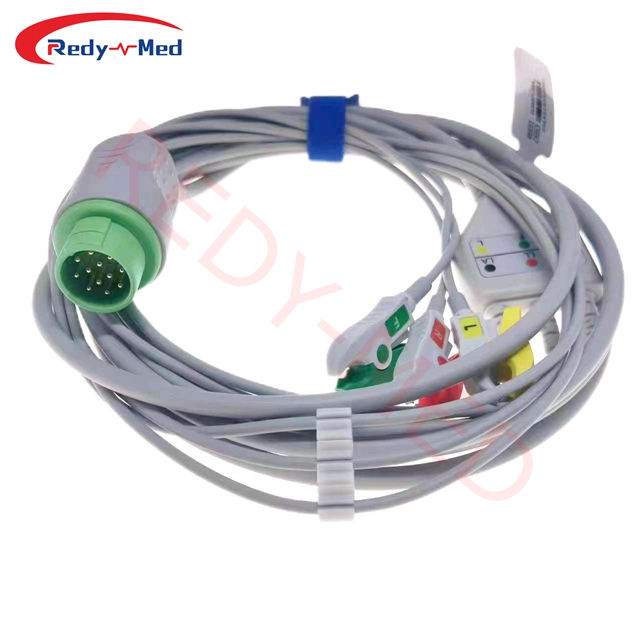
What is an ECG cable used for?
2024-03-21 00:04:21
Understanding the Role of an ECG Cable in Medical Diagnostics

What is an ECG cable used for? An ECG (Electrocardiogram) cable is a critical component in the field of medical diagnostics. It is designed to connect the patient's body to an ECG machine, enabling the measurement and recording of the electrical activity of the heart. With its specialized electrodes and connectors, the ECG cable plays a vital role in providing accurate cardiac information to healthcare professionals.
1. ECG Cable Basics
The ECG cable is a flexible and insulated cable that typically consists of multiple leads, each with an electrode at the end. The electrodes may vary in number, depending on the type of ECG being performed. The cable is equipped with connectors that securely attach to the ECG machine, ensuring a stable and reliable connection during the recording process.
2. Electrode Placement
Proper electrode placement is essential to obtain accurate ECG readings. The ECG cable's electrodes are strategically positioned on the patient's body according to standardized guidelines. Common electrode placement sites include the chest, arms, and legs. These electrodes detect and transmit the electrical signals generated by the heart, allowing for the evaluation and diagnosis of various cardiac conditions.
3. Signal Transmission and Amplification
The ECG cable serves as a conduit for transmitting the electrical signals from the patient's body to the ECG machine. The electrodes capture the tiny electrical impulses produced by the heart and send them through the cable to the machine. The cable ensures the accurate transmission of these signals and minimizes interference or noise that could affect the diagnostic quality.
Additionally, the ECG cable has built-in signal amplification capabilities. The weak electrical signals generated by the heart are amplified by the cable before they reach the ECG machine. This amplification process enhances the signal strength, enabling healthcare professionals to detect abnormalities and irregularities in the heart's electrical activity with greater precision.
4. Patient Comfort and Safety
An ECG cable is designed with patient comfort and safety in mind. The cable materials are gentle on the skin and do not cause irritation or discomfort, even during extended monitoring periods. Furthermore, the connectors are designed to provide a secure and stable connection, preventing accidental detachment and ensuring the safety of the patient throughout the procedure.
5. Advancements and Innovations
Over the years, advancements in technology have led to the development of more advanced ECG cable systems. These innovations include wireless ECG cables that eliminate the need for physical cable connections, enhancing patient mobility and comfort. Additionally, modern ECG cables may incorporate additional sensors and features to monitor other vital signs alongside the electrocardiogram.
Conclusion
In conclusion, an ECG cable plays a crucial role in medical diagnostics, enabling the measurement and recording of electrical activity in the heart. Its flexible cable, electrodes, and connectors work together to ensure accurate signal transmission, amplification, patient comfort, and safety. As technology continues to evolve, the future holds the potential for even more advanced and convenient ECG cable systems.
Get the latest price? We'll respond as soon as possible(within 12 hours)




